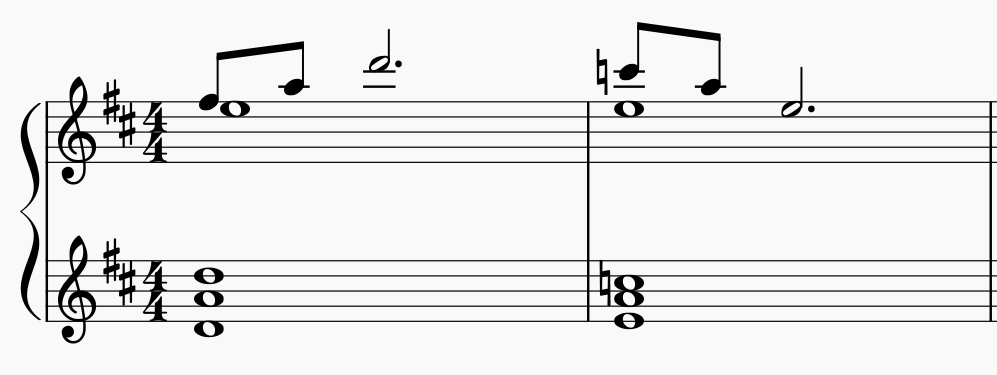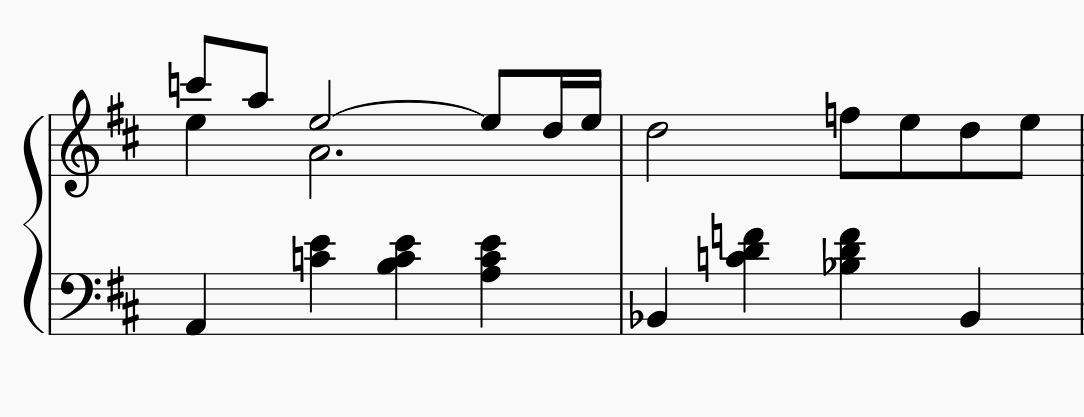Part One: Aerith's Theme

With the imminent release of the Final Fantasy VII remake (finally!), it now seems like an appropriate time to look back to the original and see what we musicians can learn from the soundtrack. As evidenced by sell-out concerts of the ‘Distant Worlds’ symphony orchestra performances, as well as appearances on classical radio stations like Classic FM and Scala, the music in the Final Fantasy series has received critical and commercial acclaim, so it’s worthy of some examination.
As I have done in previous blogs about The Legend of Zelda: Ocarina of Time and Super Mario Bros., today we are going to see what we can learn about chord progressions and interesting harmony by examining specific pieces from the game, and hopefully we’ll expand our harmonic palette along the way. Today’s blog is all about Aerith’s Theme.

Aerith’s Theme is a largely diatonic piece (staying within its home key), however there are three nice clear examples of chromatic chords (chords using notes from outside the key) in the opening few measures that we can learn from. ‘Why is it important to learn about chromaticism?’ you may be asking. Well if your music never ventures outside of the seven-note key it starts in, it can end up sounding a little dull and simplistic. However, not any old venture outside of the home key is going to sound good, so you have to learn which chromatic chords work and how they fit in to your music. That’s where I come in to help! In this blog (as well as in parts 2 and 3 looking at different pieces from the game) we will see what techniques and chord patterns composer Nobuo Uematsu uses to move outside of the home key and add colour to his music. (If you don’t know the chords and patterns used, hopefully you’ll learn something. And if you do know them… well you can just consider it revision)
First, the piece begins by establishing its key with a D major chord. There’s also a ninth added to the chord, an E, for a nice bit of colour. Adding diatonic extensions to the chord is a good way of making them more colourful without changing their function or hinting at another key, and the added 9 has a particularly warm sound.
This is followed by a move to the dominant chord (on the fifth position of the scale), an A. However, where the dominant chord is diatonically a major chord, this is an A minor, with a C natural. This creates a much softer, more delicate sound, and lacks the finality of a traditional perfect cadence.

After a couple of repetitions of this chord sequence, we come to another chromatic chord, a B flat major. This is a major chord built on the flattened sixth position of the scale. One could think of it as being borrowed from the parallel minor key, as B flat major is diatonic in the key of D minor.

This is actually a fairly common chromatic chord, cropping up regularly in classical, jazz and pop music. For a fairly well known example, think of the old standard ‘Dream a Little Dream of Me’. The flattened sixth major chord appears throughout, descending down to the dominant and then back to the tonic: ‘Dream a little dream (flat VI) of (V) me (I)’. Often when you come across these chords they are extended to create dominant seventh chords, and are also commonly followed by a major chord either moving down to the fifth scale position, or up to another chromatic chord, a major chord on the flattened seventh position; this progression turns up all the time in Koji Kondo’s music to the Super Mario and The Legend of Zelda games. This piece however takes us somewhere else, to a minor subdominant chord (a G minor in the key of D major). Subdominant is another name for the fourth position of the scale.

Like with the opening D major chord, you can see that these two chords both have added ninths too (a C natural in the B flat chord and A natural in the G minor chord).
The G minor chord follows on nicely from the B flat major chord, as they have most of their notes in common, both containing B flats and D naturals. Also like the B flat chord, this can also be thought of as being borrowed from the parallel minor key, as G minor is diatonic in the key of D minor. This has a very soft sound to it, and is another chromatic chord that turns up commonly in all genres of music. One chord progression that turns up all the time is to go to the fourth of the scale, so in C major this is an F major chord, and then go straight to an F minor.
So within just the first eight bars of the piece, we have three different examples of chromatic chords: minor dominant chord, flattened sixth position major chord, and minor subdominant chord. Hopefully they are now part of your harmonic palette too, or ‘composer’s toolbox’ or however you like to think about it. Play around with them on your instrument of choice (or DAW), see how they sound and if you like them, and try them in different contexts to see if they are appropriate etc. Maybe they’ll find their way in to your next compositions!
In next week’s blog we will be continuing the harmony lesson by looking at Tifa’s Theme, so stick around!
If you enjoyed this make sure you check out our other blogs, and stay tuned for more. If you’re serious about furthering your knowledge and your career in music, check out our Postgraduate and Premium courses on our website and see which ones are suitable for you. We’re always happy to help, so send us an email at contact@thinkspace.ac.uk with any questions and we’ll get back to you. Click the button below to take a look at our premium courses now.

